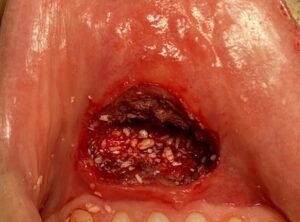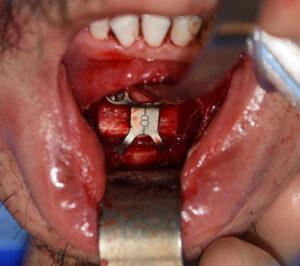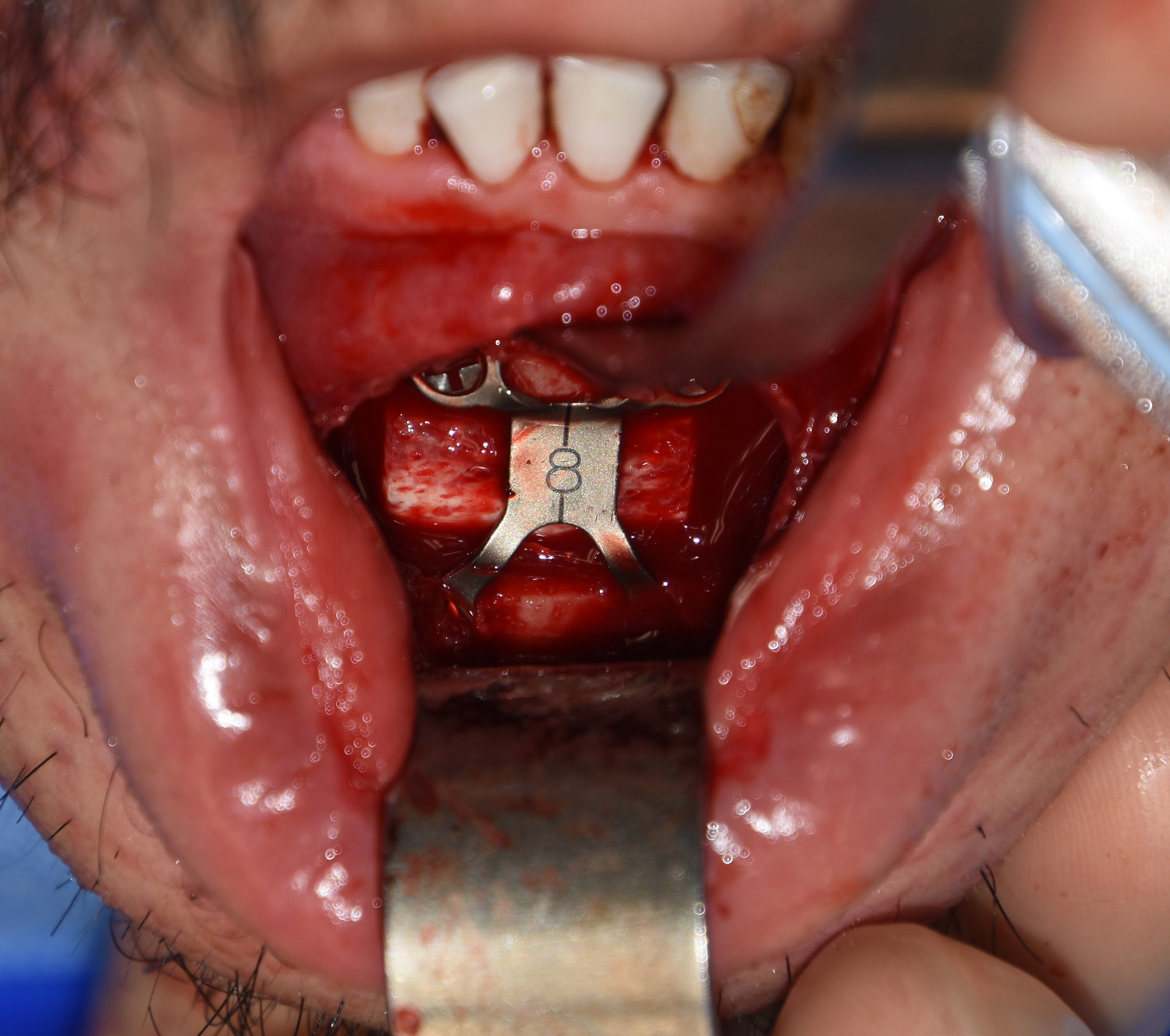A sliding genioplasty is an effective multidimensional chin reshaping procedure. Because it alters the bone along the inferior border through a pedicle bone flap repositioning, the profile of the chin bone is changed. This profile change is commonly called the bony stepoff, which is most evident in significant forward advancements…although it occurs with any type of chin bone movement.
While the repositioned bone in a sliding genioplasty has a negligible incidence of non-union or bone healing problems, this does not mean that its full shape is restored. There will be bone gaps and contour changes that result. Almost all of these will have some minor aesthetic consequence. For example the sagittal effect of the bony step off is the collapse of the overlying soft tissue into it, potentially creating a deeper labiomental fold or lip tightness due to the soft tissue contracture into it.
While the ideal method to treatise contour changes from a sliding genioplasty is an autologous bone graft, this is not practical or desired by almost all patients. As a result surgeons have placed a wide variety of materials into these defects from synthetic implants to hydroxyapatite granules. I think as a general rule implant materials should probably be avoided as the goal should be partial or complete bone defect restoration.


While bone edges and defects do remodel to some degree after a sliding genioplasty, there is no reason to not help that process be better than it might naturally be. Rather than implants of any material or shape, tissue bank bone graft materials offer a biologic boost to the healing bone with a negligible risk of infection/rejection.
Dr. Barry Eppley
Indianapolis, Indiana




